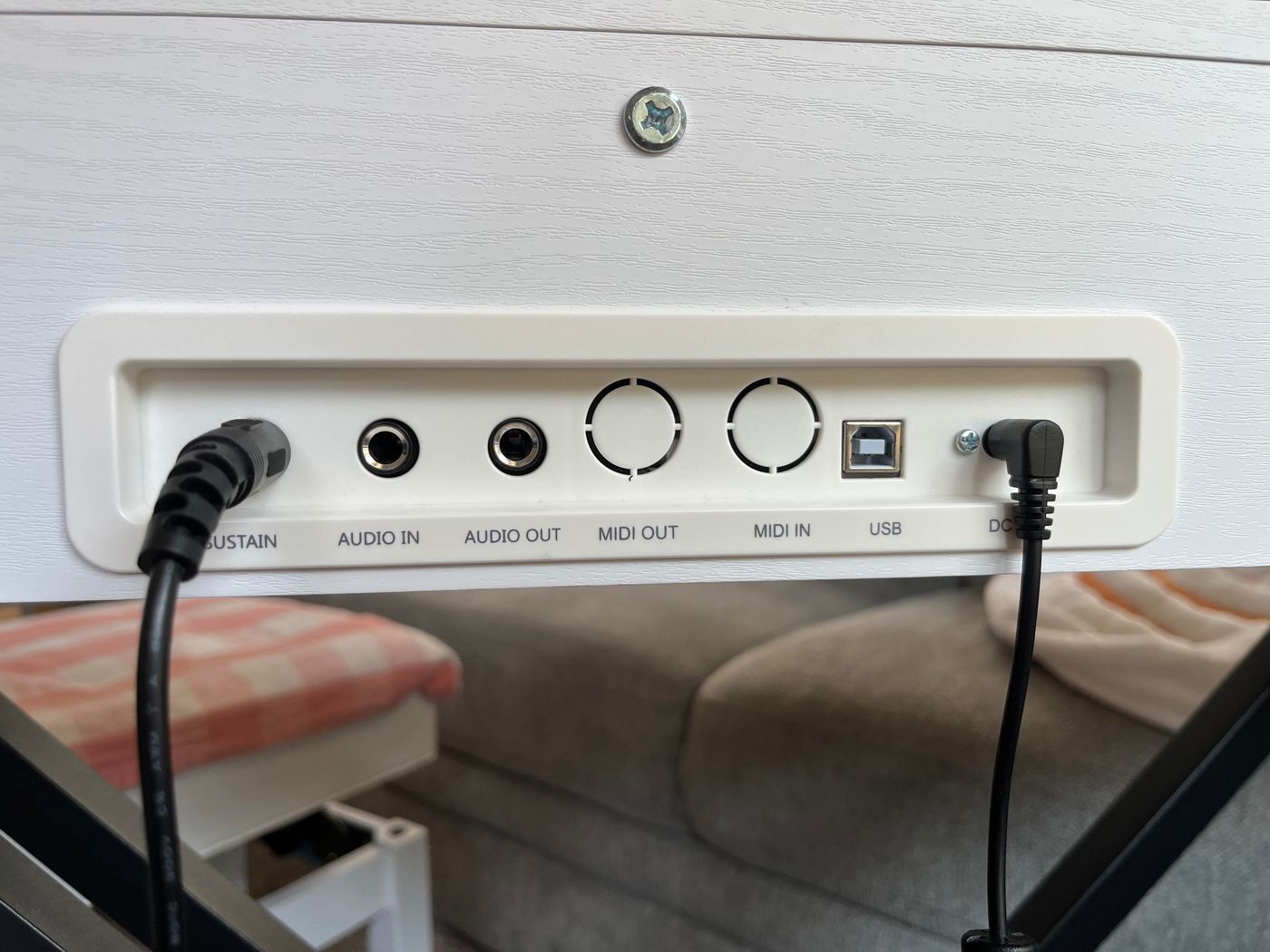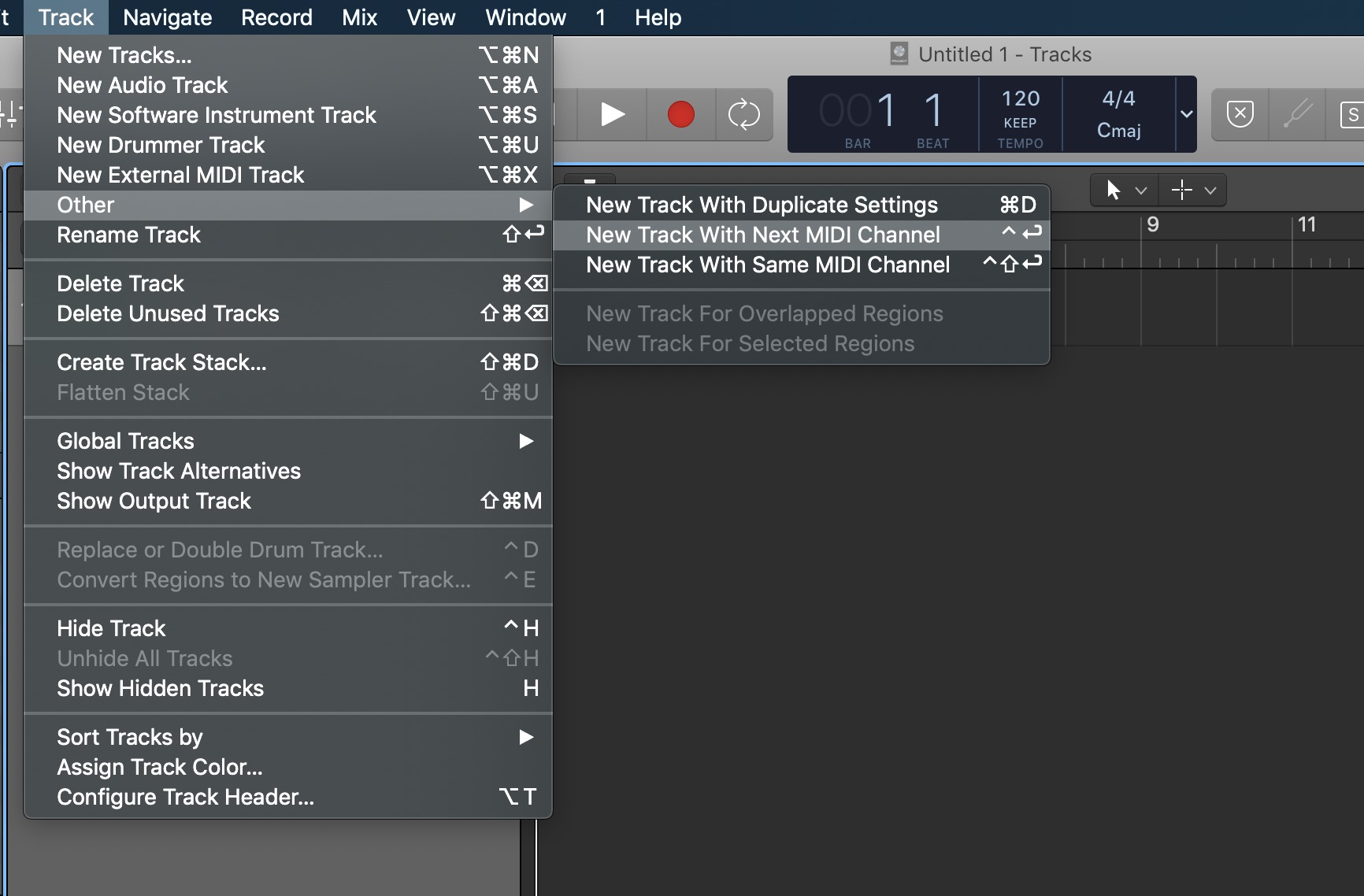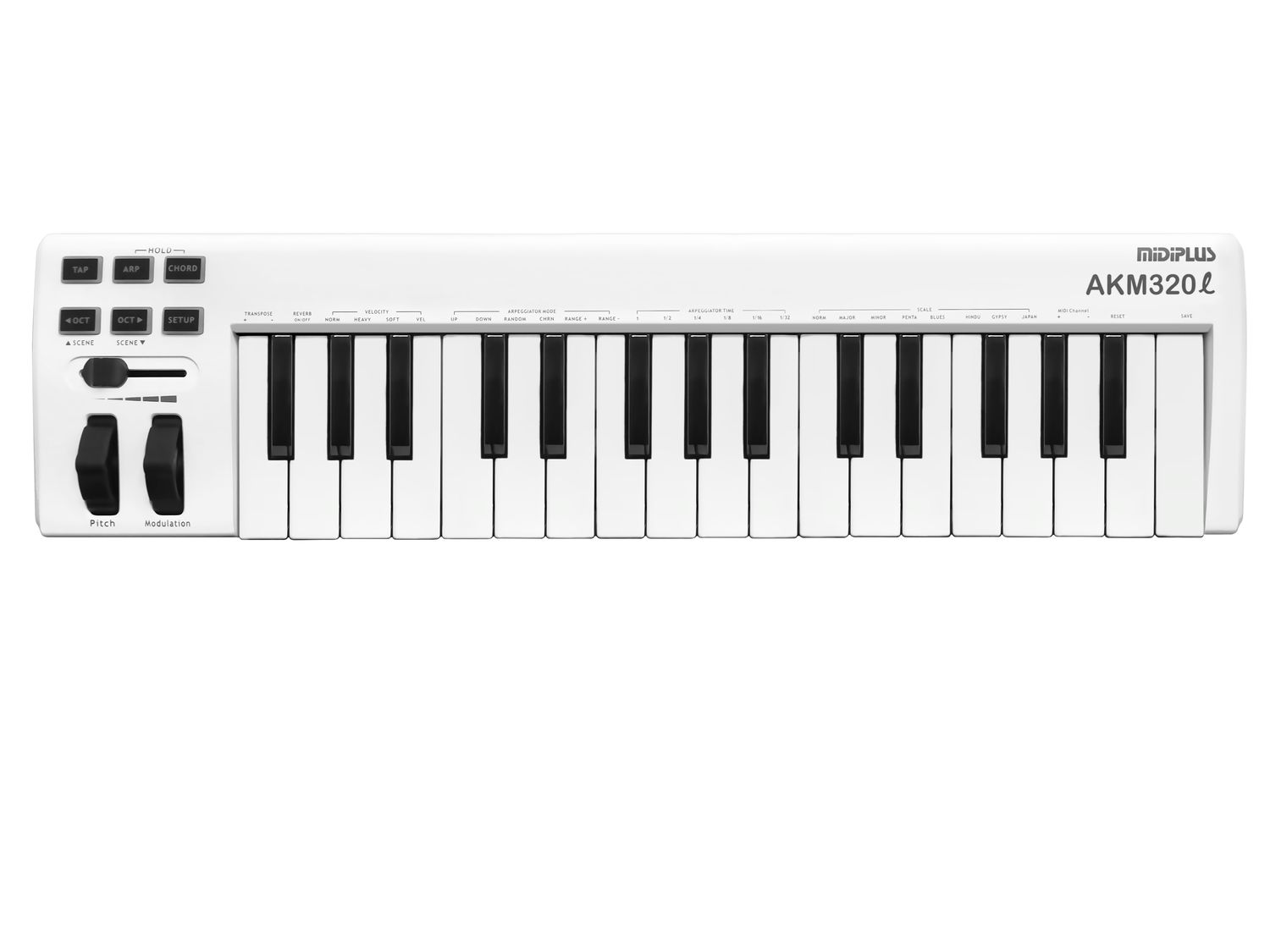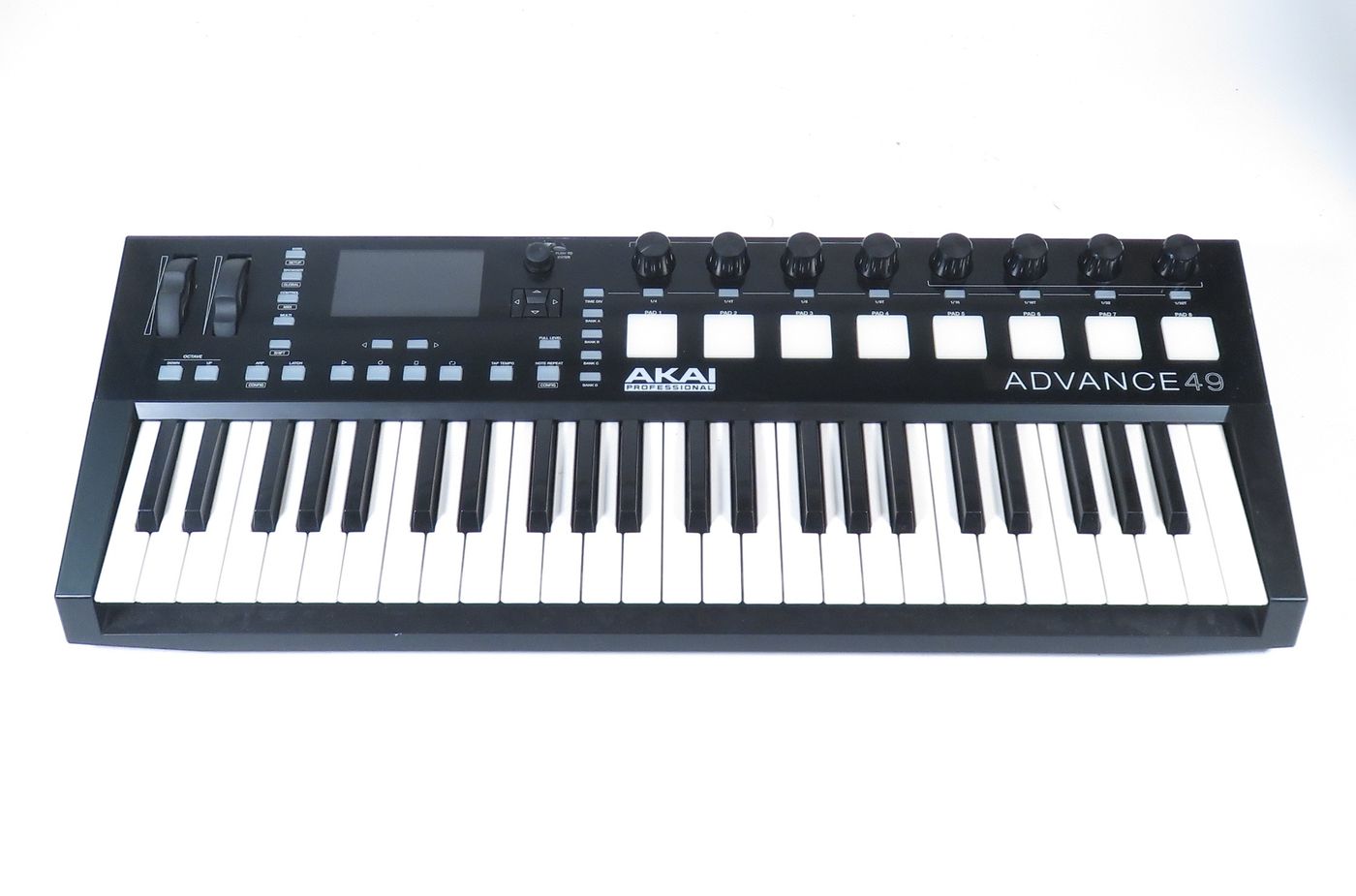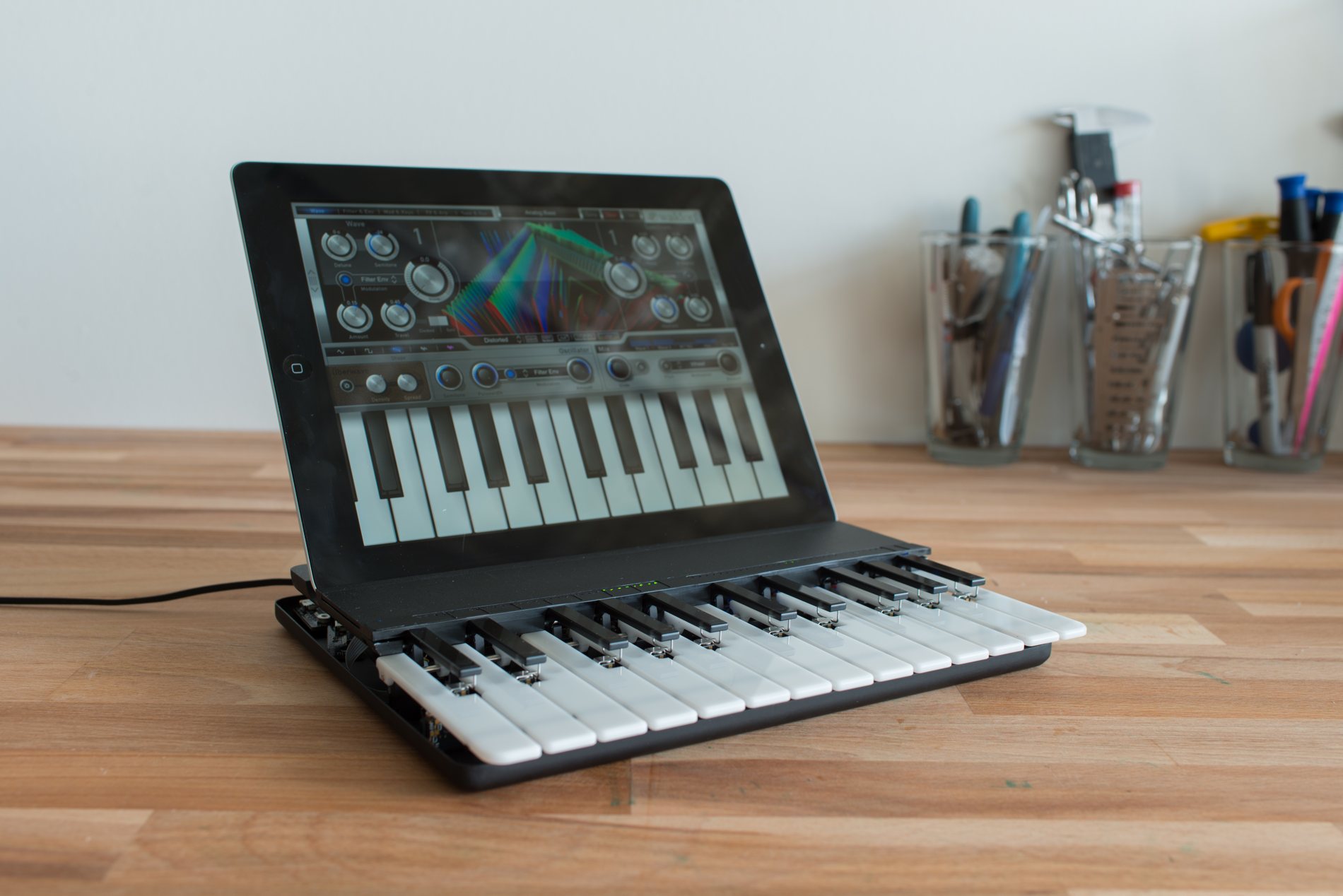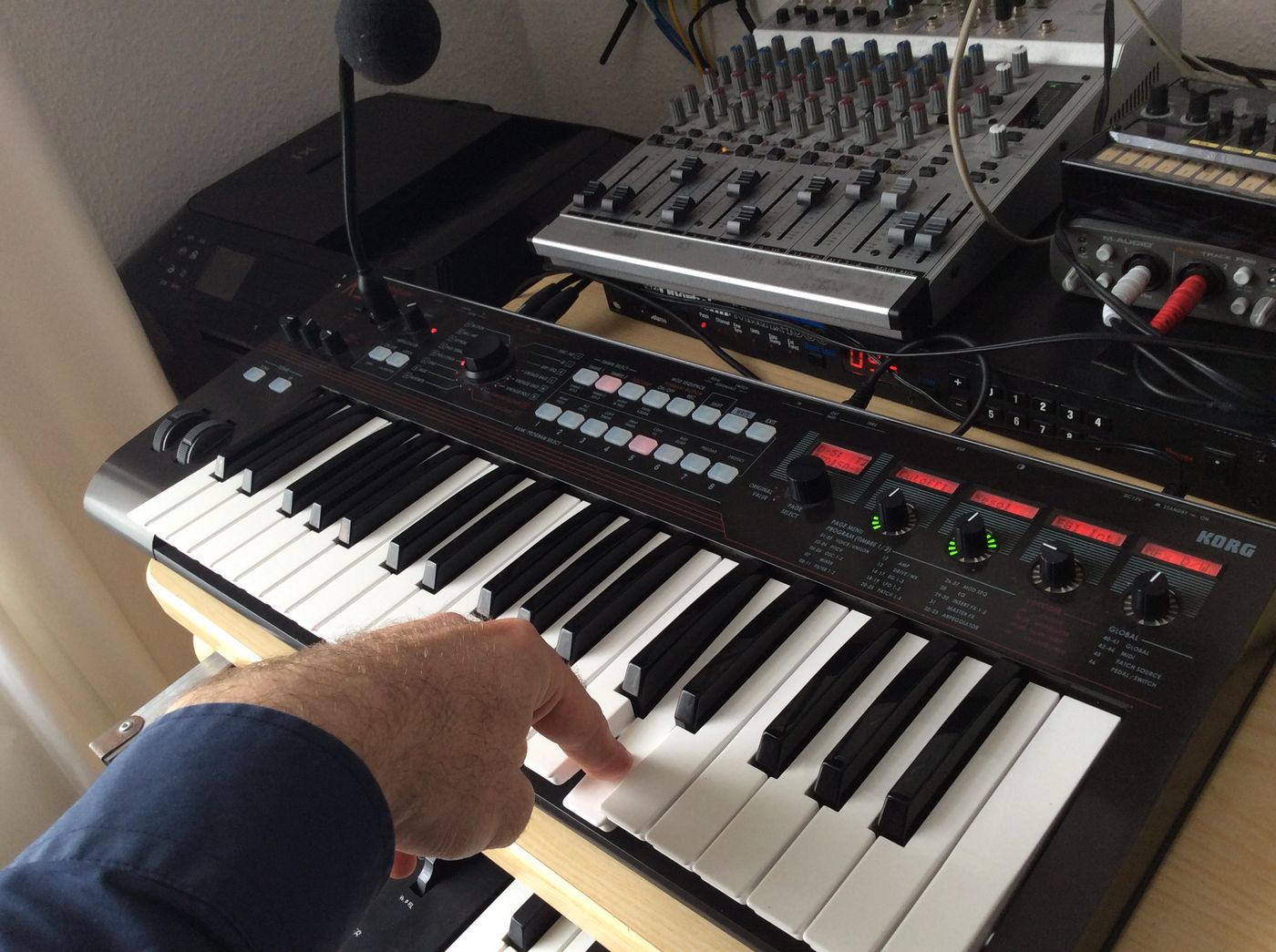Home>Production & Technology>MIDI>What Is Bluetooth MIDI Service
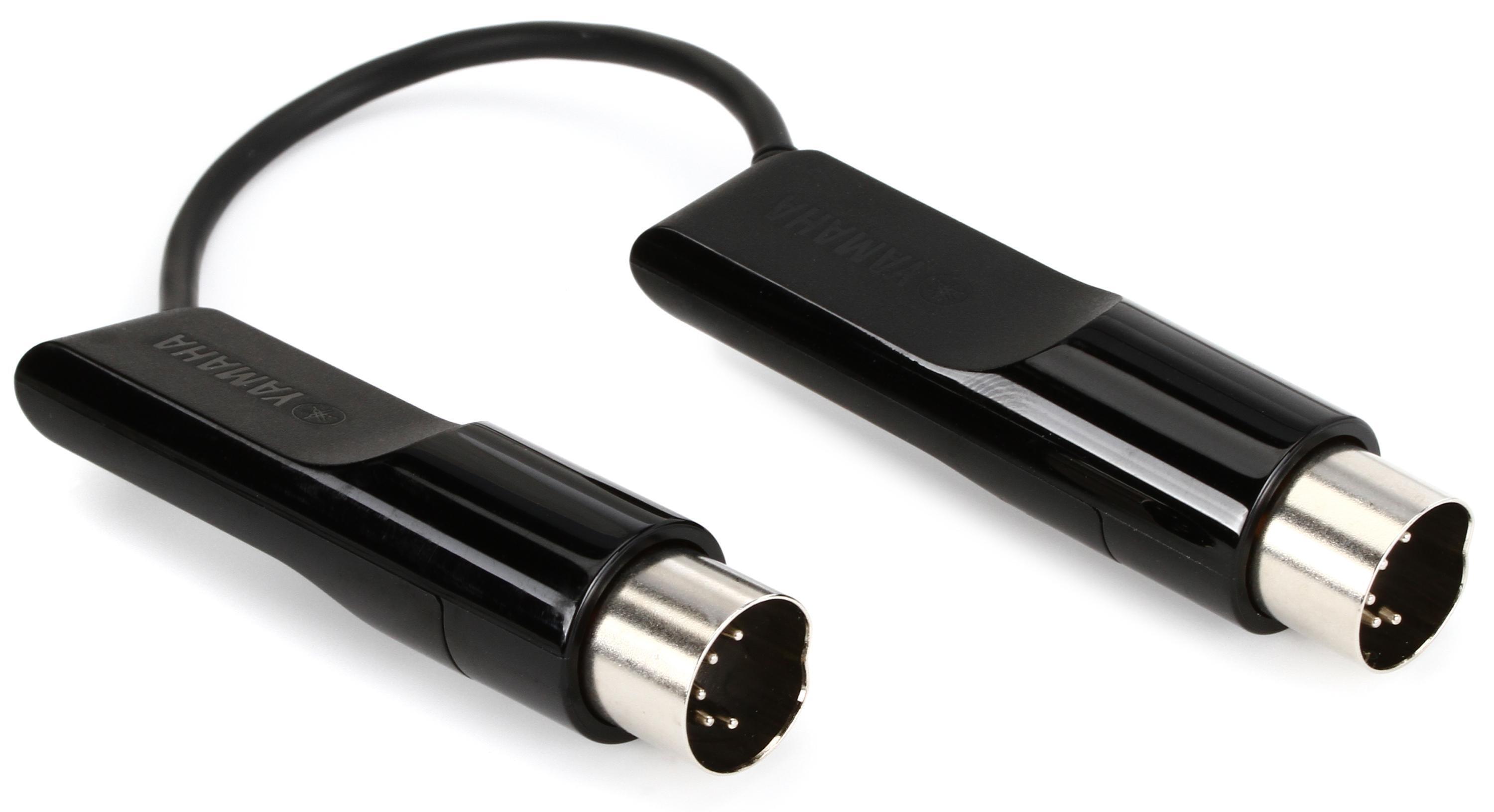

MIDI
What Is Bluetooth MIDI Service
Published: February 22, 2024
Discover the benefits of Bluetooth MIDI service and its applications in the music industry. Learn how MIDI technology enhances connectivity and performance. Explore the future of MIDI with Bluetooth integration.
(Many of the links in this article redirect to a specific reviewed product. Your purchase of these products through affiliate links helps to generate commission for AudioLover.com, at no extra cost. Learn more)
Table of Contents
Introduction
In the realm of music production and performance, the evolution of technology has continually reshaped the way musicians create and share their art. One of the most significant advancements in this domain is the advent of Bluetooth MIDI, a technology that has revolutionized the way musical instruments and devices communicate with each other.
Bluetooth MIDI enables seamless and wireless connectivity between MIDI-compatible devices, eliminating the need for traditional wired connections. This technology has empowered musicians, producers, and enthusiasts to break free from the constraints of physical cables and embrace a new era of musical creativity and collaboration.
As we delve into the intricacies of Bluetooth MIDI, it's essential to understand its historical context, operational mechanics, and the myriad advantages it offers to musicians and music enthusiasts alike. Furthermore, exploring the practical applications and setup procedures of Bluetooth MIDI will provide valuable insights into harnessing its potential for musical endeavors.
Join me on this exploration of Bluetooth MIDI, where we will uncover its origins, unravel its inner workings, and uncover the boundless possibilities it presents for the world of music.
History of Bluetooth MIDI
The history of Bluetooth MIDI traces back to the evolution of the Musical Instrument Digital Interface (MIDI) standard, which has been a cornerstone of electronic music production since its inception in the early 1980s. MIDI facilitated the communication between various musical instruments and devices, allowing for the seamless exchange of musical data such as note sequences, control signals, and other performance parameters.
The concept of wireless MIDI connectivity began to gain traction as the potential for enhanced mobility and convenience became increasingly apparent. In 2013, the Bluetooth Special Interest Group (SIG) introduced the Bluetooth 4.1 specification, which included features specifically designed to support MIDI over Bluetooth. This marked a significant milestone in the convergence of Bluetooth technology and MIDI, laying the foundation for the development of Bluetooth MIDI as a standardized protocol.
Subsequently, in 2016, the MIDI Manufacturers Association (MMA) and the Association of Musical Electronics Industry (AMEI) collaborated to establish the Bluetooth MIDI specification, formalizing the protocol for wireless MIDI communication. This collaboration culminated in the release of the Bluetooth MIDI Specification Version 1.0, which provided a comprehensive framework for implementing MIDI over Bluetooth Low Energy (BLE).
The introduction of the Bluetooth MIDI standard represented a pivotal moment in the evolution of music technology, as it liberated musicians and producers from the constraints of physical cables, enabling them to explore new creative possibilities with unprecedented freedom and flexibility. This breakthrough not only streamlined the connectivity between MIDI-compatible devices but also heralded a new era of innovation in musical instrument design and performance techniques.
Since its inception, Bluetooth MIDI has continued to evolve, with ongoing refinements and updates enhancing its performance, reliability, and compatibility across a wide range of musical instruments and devices. The seamless integration of Bluetooth MIDI into music production software and hardware has further solidified its position as a transformative force in the realm of electronic music creation and performance.
The historical trajectory of Bluetooth MIDI underscores its profound impact on the music industry, empowering musicians, producers, and enthusiasts to harness the power of wireless connectivity in their creative pursuits. This evolution represents a testament to the relentless innovation and commitment to advancing the art and science of music through cutting-edge technological advancements.
How Bluetooth MIDI Works
Bluetooth MIDI operates on the foundation of the MIDI protocol, which serves as the universal language for communicating musical information between electronic instruments and devices. At its core, Bluetooth MIDI leverages the Bluetooth Low Energy (BLE) technology to establish wireless connections, enabling seamless communication between MIDI-compatible devices.
When a musician or producer initiates a Bluetooth MIDI connection, the process begins with the transmission of MIDI data from the sender, such as a MIDI controller or instrument. This data encompasses a wide array of musical information, including note events, control changes, pitch bend, modulation, and other performance parameters.
Upon receiving the MIDI data, the Bluetooth MIDI interface encapsulates this information into packets, which are then transmitted wirelessly via Bluetooth Low Energy. These packets are designed to ensure the efficient and reliable delivery of MIDI data, maintaining the integrity and timing accuracy essential for musical performance and production.
Upon reaching the recipient device, such as a synthesizer, computer, or mobile device, the Bluetooth MIDI interface decodes the received packets, reconstructing the original MIDI data. This process ensures that the musical information is faithfully reproduced on the receiving device, preserving the nuances and intricacies of the performance.
The seamless and low-latency nature of Bluetooth MIDI communication is a testament to the robustness and efficiency of the underlying technology. This real-time exchange of MIDI data over Bluetooth Low Energy empowers musicians and producers to engage in expressive and dynamic musical performances without being tethered by physical cables.
Furthermore, Bluetooth MIDI embraces the concept of interoperability, allowing devices from different manufacturers to seamlessly communicate with each other. This interoperability fosters a collaborative ecosystem where musicians can effortlessly integrate diverse MIDI-compatible instruments and devices into their creative workflows, transcending conventional boundaries and unlocking new avenues for musical expression.
The underlying principles of Bluetooth MIDI exemplify a harmonious fusion of cutting-edge wireless technology and the timeless language of MIDI, culminating in a transformative platform that empowers musicians and producers to unleash their creative potential with unparalleled freedom and flexibility. As the adoption of Bluetooth MIDI continues to proliferate across the music industry, its impact on the evolution of music technology and creative expression is poised to resonate profoundly in the years to come.
Benefits of Bluetooth MIDI
Bluetooth MIDI offers a myriad of compelling benefits that have redefined the landscape of music production and performance, ushering in a new era of creativity and convenience for musicians and producers. These advantages encompass the realms of mobility, versatility, connectivity, and expressive potential, fundamentally transforming the way musical instruments and devices interact and empowering artists to explore uncharted territories in their artistic endeavors.
1. Enhanced Mobility
One of the primary advantages of Bluetooth MIDI is the liberation from traditional wired connections, enabling musicians to move freely while performing or producing music. This newfound mobility fosters dynamic and engaging live performances, as artists can seamlessly interact with their instruments and devices without being tethered by cables. Additionally, the absence of physical connections simplifies stage setups and facilitates spontaneous collaborations, amplifying the spontaneity and energy of musical performances.
2. Versatility and Interoperability
Bluetooth MIDI facilitates seamless connectivity between a diverse array of MIDI-compatible instruments and devices, transcending the constraints of proprietary interfaces and compatibility issues. This interoperability empowers musicians to effortlessly integrate instruments from different manufacturers into their setups, fostering a rich and diverse sonic palette. Furthermore, the versatility of Bluetooth MIDI enables musicians to explore unconventional performance configurations and experiment with innovative instrument pairings, expanding the horizons of musical expression.
3. Streamlined Workflow
The wireless nature of Bluetooth MIDI streamlines the music production workflow, eliminating the clutter and logistical challenges associated with traditional cable connections. Artists can effortlessly transition between different instruments and devices, facilitating a fluid and intuitive creative process. This seamless integration enhances productivity and creativity, allowing musicians and producers to focus on their artistic vision without being encumbered by technical constraints.
4. Real-Time Performance and Recording
Bluetooth MIDI empowers musicians to engage in real-time performances and recording sessions with unparalleled flexibility and precision. The low-latency communication ensures that musical data is transmitted and received instantaneously, preserving the expressive nuances and dynamics of the performance. This real-time responsiveness is particularly valuable in live settings, where artists rely on the immediacy and reliability of their musical instruments and devices to deliver captivating performances.
5. Future-Proof Connectivity
As the music industry continues to embrace wireless technologies, Bluetooth MIDI represents a future-proof connectivity solution that aligns with the evolving landscape of music production and performance. By embracing Bluetooth MIDI, musicians and producers position themselves at the forefront of technological innovation, ensuring seamless compatibility with emerging music technology platforms and ecosystems.
In essence, the benefits of Bluetooth MIDI extend far beyond the realm of wireless connectivity, encompassing a transformative paradigm shift in the way music is created, performed, and shared. This technology epitomizes the convergence of innovation and artistic expression, empowering musicians to embark on a boundless journey of sonic exploration and creative discovery.
I have highlighted the diverse advantages of Bluetooth MIDI, emphasizing its impact on mobility, versatility, workflow efficiency, real-time performance, and future-proof connectivity. If you need further elaboration on any specific benefit or additional details, feel free to let me know!
Applications of Bluetooth MIDI
Bluetooth MIDI has permeated various facets of music production, performance, and creative expression, fostering a rich tapestry of applications that underscore its transformative impact on the music industry. From live performances to studio productions, and from mobile music creation to interactive installations, Bluetooth MIDI has transcended traditional boundaries, empowering musicians, producers, and enthusiasts to explore new frontiers of musical innovation and collaboration.
1. Live Performances
In the realm of live music, Bluetooth MIDI has emerged as a catalyst for dynamic and immersive performances. Musicians harness the wireless connectivity of Bluetooth MIDI to engage with an array of instruments and controllers, fostering a fluid and expressive onstage experience. Whether triggering electronic sounds from a mobile device, controlling synthesizers with a wireless MIDI keyboard, or seamlessly integrating diverse MIDI-compatible instruments into a cohesive ensemble, Bluetooth MIDI elevates live performances to new heights of creativity and interactivity.
2. Studio Productions
In the realm of music production, Bluetooth MIDI streamlines the creative workflow, enabling seamless integration of MIDI controllers, synthesizers, and software instruments. Producers leverage the wireless connectivity of Bluetooth MIDI to interact with a diverse array of musical tools, facilitating intuitive and immersive studio sessions. This versatility extends to collaborative productions, where multiple artists can effortlessly connect their MIDI devices, fostering a synergistic environment that nurtures creative exploration and sonic experimentation.
3. Mobile Music Creation
The advent of mobile music creation applications has been significantly enhanced by the integration of Bluetooth MIDI. Musicians and producers leverage the wireless connectivity of Bluetooth MIDI to unlock the full potential of their mobile devices, transforming smartphones and tablets into powerful platforms for musical expression. Whether composing melodies, controlling virtual instruments, or triggering sound effects, Bluetooth MIDI empowers artists to embark on creative journeys unhindered by physical constraints, amplifying the accessibility and versatility of mobile music creation.
4. Interactive Installations
The realm of interactive art installations and multimedia experiences has been enriched by the seamless connectivity offered by Bluetooth MIDI. Artists and creators leverage Bluetooth MIDI to establish wireless communication between interactive elements, musical devices, and visual displays, fostering immersive and captivating experiences for audiences. This convergence of technology and artistic expression exemplifies the transformative potential of Bluetooth MIDI in shaping interactive and multi-sensory environments that blur the boundaries between music, art, and technology.
5. Educational Initiatives
Bluetooth MIDI has also found resonance in educational settings, empowering students and educators to explore music technology with enhanced accessibility and flexibility. By embracing Bluetooth MIDI, educational institutions and music programs facilitate hands-on learning experiences that transcend traditional limitations, fostering a dynamic and engaging approach to music education. Students can seamlessly connect their MIDI instruments and devices, immersing themselves in interactive lessons and collaborative projects that nurture their creativity and technical proficiency.
In essence, the applications of Bluetooth MIDI span a diverse spectrum of musical endeavors, encompassing live performances, studio productions, mobile music creation, interactive installations, and educational initiatives. This pervasive influence underscores the profound impact of Bluetooth MIDI in shaping the present and future of music, transcending conventional boundaries and amplifying the creative potential of artists and enthusiasts alike.
Compatibility and Requirements
Bluetooth MIDI technology has significantly expanded the horizons of connectivity in the realm of music production and performance, offering a seamless and versatile platform for interconnecting MIDI-compatible devices. As musicians and producers embrace the possibilities presented by Bluetooth MIDI, it is essential to understand the compatibility considerations and requirements that underpin its operational framework.
Device Compatibility
Bluetooth MIDI is designed to foster interoperability across a wide array of MIDI-compatible devices, including synthesizers, MIDI controllers, digital audio workstations (DAWs), mobile devices, and computer systems. The adoption of Bluetooth MIDI by leading manufacturers has resulted in a growing ecosystem of devices that seamlessly support this wireless protocol. It is imperative for users to verify the Bluetooth MIDI compatibility of their devices, ensuring that they possess the requisite firmware or software updates to enable Bluetooth MIDI functionality.
Operating System Support
The compatibility of Bluetooth MIDI extends to the operating systems utilized across various devices. Both macOS and Windows platforms offer native support for Bluetooth MIDI, empowering users to establish wireless connections with minimal configuration. Additionally, mobile operating systems such as iOS and Android have embraced Bluetooth MIDI, enabling seamless integration with a diverse range of music production and performance applications. It is crucial for users to ascertain the Bluetooth MIDI compatibility of their operating systems and devices, ensuring a harmonious and reliable wireless connectivity experience.
Bluetooth Low Energy (BLE) Support
The seamless operation of Bluetooth MIDI hinges on the utilization of Bluetooth Low Energy (BLE) technology, which optimizes power efficiency and facilitates robust wireless communication. Devices that support BLE are inherently compatible with Bluetooth MIDI, enabling efficient data transmission while conserving energy resources. As the backbone of wireless MIDI connectivity, BLE compatibility is a fundamental requirement for leveraging the full potential of Bluetooth MIDI technology.
Firmware and Software Updates
In the context of Bluetooth MIDI compatibility, staying abreast of firmware and software updates is paramount. Manufacturers often release updates that enhance Bluetooth MIDI functionality, address compatibility issues, and introduce new features. By regularly updating the firmware of MIDI instruments and devices, as well as the software of music production applications, users can ensure optimal Bluetooth MIDI compatibility and performance.
System Requirements
While the core functionality of Bluetooth MIDI revolves around wireless connectivity, it is essential to consider the broader system requirements for leveraging this technology. This encompasses factors such as Bluetooth hardware specifications, minimum operating system versions, and device-specific considerations. By adhering to the prescribed system requirements, users can mitigate potential compatibility challenges and optimize their Bluetooth MIDI experience.
In essence, the compatibility and requirements of Bluetooth MIDI encompass a multifaceted landscape of device compatibility, operating system support, BLE integration, firmware and software updates, and system requirements. By navigating these considerations with diligence and foresight, musicians and producers can harness the full potential of Bluetooth MIDI, unlocking a realm of wireless creativity and connectivity that transcends conventional boundaries.
Setting Up Bluetooth MIDI
Setting up Bluetooth MIDI involves a seamless process that empowers musicians and producers to establish wireless connectivity between MIDI-compatible devices, unlocking a realm of creative possibilities without the constraints of traditional wired connections. The following steps outline the essential procedures for setting up Bluetooth MIDI, facilitating a harmonious and intuitive wireless communication experience.
1. Device Preparation
Begin by ensuring that the MIDI-compatible devices intended for Bluetooth MIDI connectivity are powered on and within proximity to each other. Verify that the devices possess Bluetooth connectivity capabilities and are updated with the latest firmware or software that supports Bluetooth MIDI functionality.
2. Bluetooth Pairing
Access the Bluetooth settings on the respective devices and initiate the pairing process. Locate the option to pair a new Bluetooth device and search for available Bluetooth MIDI devices within the vicinity. Upon identifying the target MIDI device, initiate the pairing process to establish a secure and reliable Bluetooth connection.
3. MIDI Configuration
Once the Bluetooth pairing is successfully established, navigate to the MIDI settings or preferences on the devices that will be transmitting and receiving MIDI data. Select the Bluetooth MIDI interface as the designated input or output source, ensuring that the devices recognize each other as primary MIDI communication endpoints.
4. Testing and Optimization
To validate the Bluetooth MIDI connection, initiate a test transmission of MIDI data from the sending device to the receiving device. This can involve triggering notes, modifying control parameters, or engaging in real-time performance to assess the responsiveness and reliability of the Bluetooth MIDI connection. Fine-tune the MIDI settings and Bluetooth configurations to optimize the wireless communication for latency, stability, and overall performance.
5. Integration with Music Software
If the Bluetooth MIDI connection is intended for interfacing with music production software or digital audio workstations (DAWs), ensure that the software recognizes the Bluetooth MIDI interface as a viable input or output device. Configure the MIDI routing within the software to accommodate the wireless connectivity, enabling seamless integration of Bluetooth MIDI into the music production workflow.
6. Calibration and Customization
Depending on the specific MIDI-compatible devices and instruments involved, consider calibrating and customizing the Bluetooth MIDI settings to align with the unique performance requirements and preferences. This may encompass adjusting latency settings, assigning MIDI channels, and configuring parameter mappings to tailor the wireless MIDI communication to the artist's individualized workflow.
By meticulously following these steps, musicians and producers can navigate the process of setting up Bluetooth MIDI with confidence and precision, unlocking the boundless potential of wireless connectivity in the realm of music production and performance. This seamless integration of Bluetooth MIDI transcends conventional limitations, fostering a dynamic and immersive creative environment where artists can express themselves with unparalleled freedom and flexibility.
Conclusion
In conclusion, the advent of Bluetooth MIDI represents a watershed moment in the evolution of music technology, heralding a paradigm shift in the way musicians and producers engage with their instruments and devices. The seamless integration of wireless connectivity, the versatility of interoperability, and the boundless creative potential encapsulate the transformative impact of Bluetooth MIDI on the music industry.
As we reflect on the historical trajectory of Bluetooth MIDI, from its inception as a standardized protocol to its pervasive influence across live performances, studio productions, mobile music creation, interactive installations, and educational initiatives, it becomes evident that this technology has transcended traditional boundaries, empowering artists to explore new frontiers of musical innovation and collaboration.
The benefits of Bluetooth MIDI, ranging from enhanced mobility and streamlined workflow to real-time performance and future-proof connectivity, resonate with a diverse spectrum of musicians, producers, and enthusiasts. The liberation from traditional wired connections, coupled with the seamless integration of diverse MIDI-compatible devices, amplifies the accessibility and versatility of music creation and performance, fostering a dynamic and inclusive creative environment.
Furthermore, the compatibility and requirements of Bluetooth MIDI underscore the commitment to fostering a cohesive ecosystem where devices from different manufacturers seamlessly communicate, operating systems offer native support, and Bluetooth Low Energy (BLE) technology optimizes power efficiency. This convergence of technological innovation and user-centric design epitomizes the ethos of Bluetooth MIDI, ensuring a harmonious and reliable wireless connectivity experience for creators and performers.
The process of setting up Bluetooth MIDI, characterized by its intuitive pairing, MIDI configuration, testing, optimization, integration with music software, and customization, encapsulates the user-centric approach that underpins the seamless adoption of this technology. By navigating these steps, musicians and producers can harness the full potential of Bluetooth MIDI, unlocking a realm of wireless creativity and connectivity that transcends conventional boundaries.
In essence, Bluetooth MIDI stands as a testament to the relentless pursuit of innovation and the unwavering commitment to advancing the art and science of music through cutting-edge technological advancements. As the adoption of Bluetooth MIDI continues to proliferate across the music industry, its impact on the evolution of music technology and creative expression is poised to resonate profoundly in the years to come.

